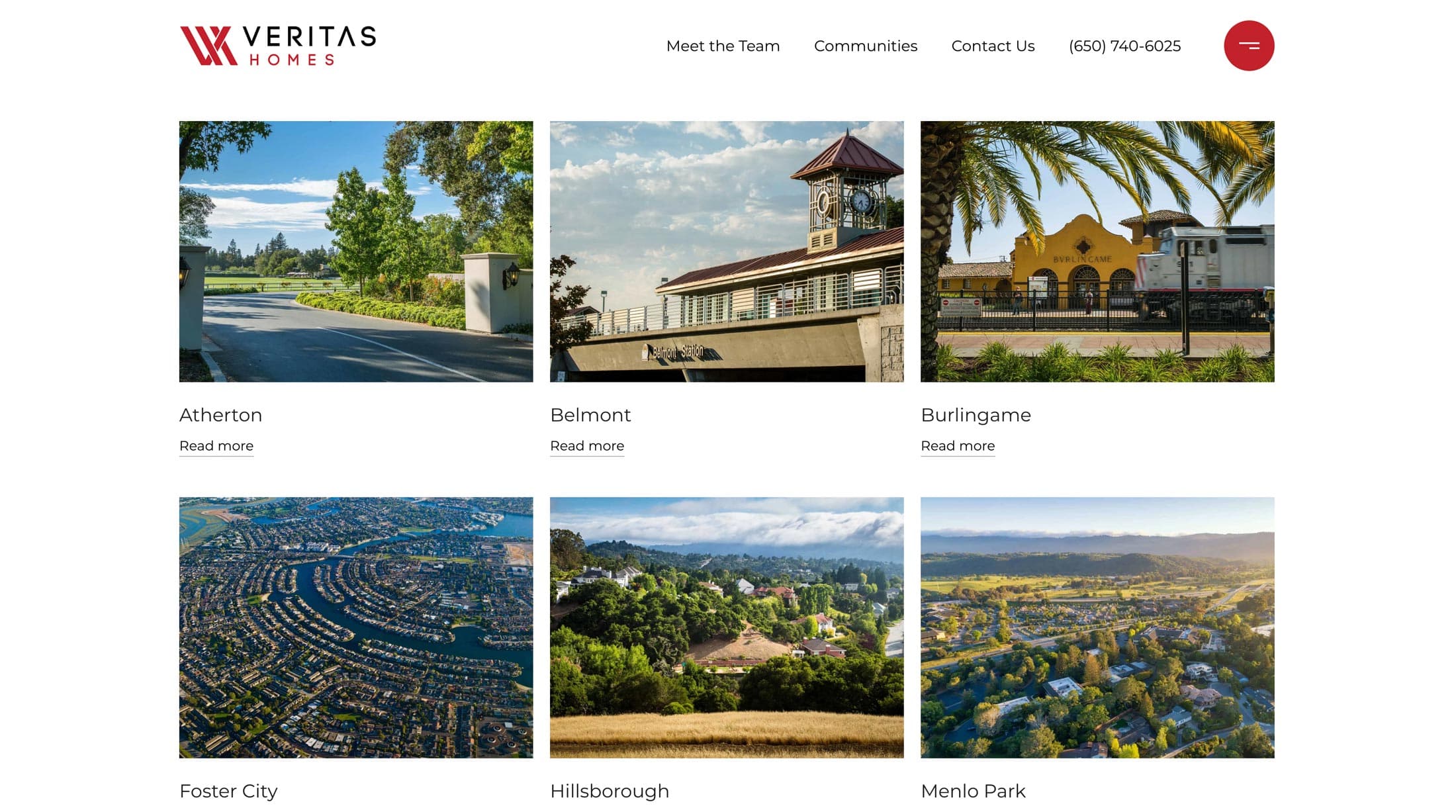
Think of your business website as a digital storefront: It has to draw clients in if it’s going to generate predictable growth.
At Side x Side 2021, Joe Ngo (senior product manager at Side) and Ashley Bledsoe (director of marketing at Side) explained how to do precisely that. Here are their most-used strategies for top agents looking to maximize their website’s impact.

Key Takeaways:
- Search engines love hyper-local content and captioned images.
- Most visitors to your website will be on their phones — make sure they can easily access your content.
- You’ll only turn website visitors into prospects by giving them opportunities to interact and share their contact information.
- Don’t forget to publicize your website through email and social media.
Now let’s dig into the details:
1. Focus on specific neighborhoods

Source: Veritas Homes
Search engines like Google will tailor your search results based on your location. So if you’re looking for leads in a particular market, don’t be afraid to go hyper-local with your website content.
There may be lots of buyers and sellers in San Diego, but there are also lots of agents trying to get their attention. If you zero in on creating content for a specific neighborhood, like La Jolla, your content has a better chance of popping up on Google for people searching in that area.
2. Prioritize mobile compatibility
Around 55% of traffic to agents’ websites comes from mobile devices — which means if you haven’t optimized your website for smartphones and tablets, you may be losing clients.
Search engines also reward web content that has been optimized for mobile with higher rankings. If you want more people to visit (and stay on) your website, it has to be mobile-optimized.
For these reasons, the Side team designs each partner website page for mobile-first accessibility. If you’re working on your own design, always be sure to use both mobile and desktop view to preview your progress and make any necessary adjustments.
3. Get visual with your numbers
Visuals give your website more depth — and not every visual has to be a listing photo. Try incorporating stat blocks: visual representations of your key business metrics. These can be standard stats, like # of homes sold, or creative ones, like this one from Artemis Real Estate: # of champagne bottles delivered.

Source: Artemis Real Estate
Presenting numbers like this grabs the visitor’s attention, and Side’s website platform lets you add stat visuals with a simple dropdown menu. This is a great chance for you to showcase your personality. The data you choose to highlight can say a lot about your brand culture.
4. Put a call to action on every page

Source: Realm Real Estate
A call to action gives visitors to your website something concrete to do: fill out a form, sign up for a newsletter, take a quiz, etc. And you need one on every single page of your website.
That’s because the call to action is what captures visitors’ contact information, converting visitors into prospects you can add to your CRM. Every landing page should invite your audience to interact with your brand.
Some best practices for calls to action are:
- Close out every page on your website with a call to action. Side’s website platform lets you easily add a text block that creates a pre-populated form for your leads to fill out.
- Make sure that when visitors to your website respond to your call to action, their information gets routed to the appropriate team member’s CRM.
- Use an image as the backdrop to make your call to action pop.
5. Start a blog
Adding a blog to your website is a great way to establish yourself as a real estate thought leader, local market authority, and/or expert on all things fun in your targeted neighborhood.

Source: Illuminate Properties
The best blogs focus on a single strategy, like sharing hyper-local community insights. You can post a curated list of the best coffee shops in your neighborhood or break down key market data for a specific community and spark conversations with your sphere.
Shout out (and link to) local businesses whenever you can to strengthen your community relationships. And don’t forget to add captions to your images — it’s an easy way to boost your SEO.
6. Share your web content on other channels
If you’re going to spend time posting stellar content to your website, don’t just let it sit there. Make sure you’re actively driving traffic to your site by promoting it to your sphere!
Repurposing your web content through social media and email marketing campaigns helps spread awareness of your brand, leading to more potential leads.
Leverage these six tips to turn your website into a lead-generation machine — which is exactly what top agents need.
